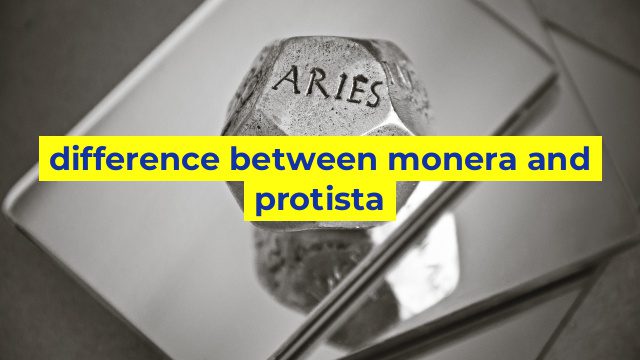Difference between Monera and Protista
Monera and Protista are two different groups of organisms with distinct characteristics, and it’s essential to differentiate them. Both of them belong to the kingdom of Protista, which includes unicellular eukaryotic organisms.
Monera
Monera is a kingdom of prokaryotic organisms, which means that they don’t have a nucleus and their genetic material is not enclosed in a membrane. Bacteria are the most common example of monera. They are unicellular and have different shapes, including spherical, rod-shaped, spiral, and filamentous.
Monera is divided into two different groups, which are the Archaea and Bacteria. The Archaea group includes prokaryotic organisms that are found in extreme environments, such as hot springs, salt lakes, and deep-sea hydrothermal vents. On the other hand, the Bacteria group includes prokaryotic organisms that are found in different environments, including soil, water, and the human gut.
Protista
Protista is a diverse kingdom of eukaryotic organisms that include unicellular organisms such as amoeba, paramecium, and euglena. Protista can also include multicellular organisms such as seaweed.
Protista is divided into three main groups, which are the animal-like protozoa, the plant-like algae, and the fungus-like slime molds. The animal-like protozoa include unicellular organisms that use different strategies to move, such as cilia, flagella, or pseudopods. The plant-like algae are unicellular or multicellular organisms that use photosynthesis to produce their own food. Finally, the fungus-like slime molds are unicellular or multicellular organisms that have a similar mode of nutrition to fungi.
Difference between Monera and Protista
The main difference between Monera and Protista is that Monera includes prokaryotic organisms, whereas Protista includes eukaryotic organisms. Monera doesn’t have a nucleus or membrane-bound organelles, while Protista has a nucleus and can have other organelles like mitochondria and chloroplasts.
Another significant difference is that Monera is mainly composed of bacteria, while Protista has a more diverse range of organisms, including unicellular algae, protozoa, and multicellular organisms such as seaweed.
In conclusion, Monera and Protista are two different groups of organisms that have different characteristics. Knowing the differences between them is essential to understanding the diversity of life on our planet.
Table difference between monera and protista
| Characteristic | Monera | Protista |
|---|---|---|
| Cell Type | Prokaryotic | Eukaryotic |
| Cell Wall | Present | Present or Absent |
| Nucleus | Absent | Present |
| Movement | Usually by flagella or cilia | Varies greatly; some have flagella or cilia, others use pseudopodia etc. |
| Examples | Bacteria, blue-green algae | Amoeba, paramecium, algae, slime molds |


